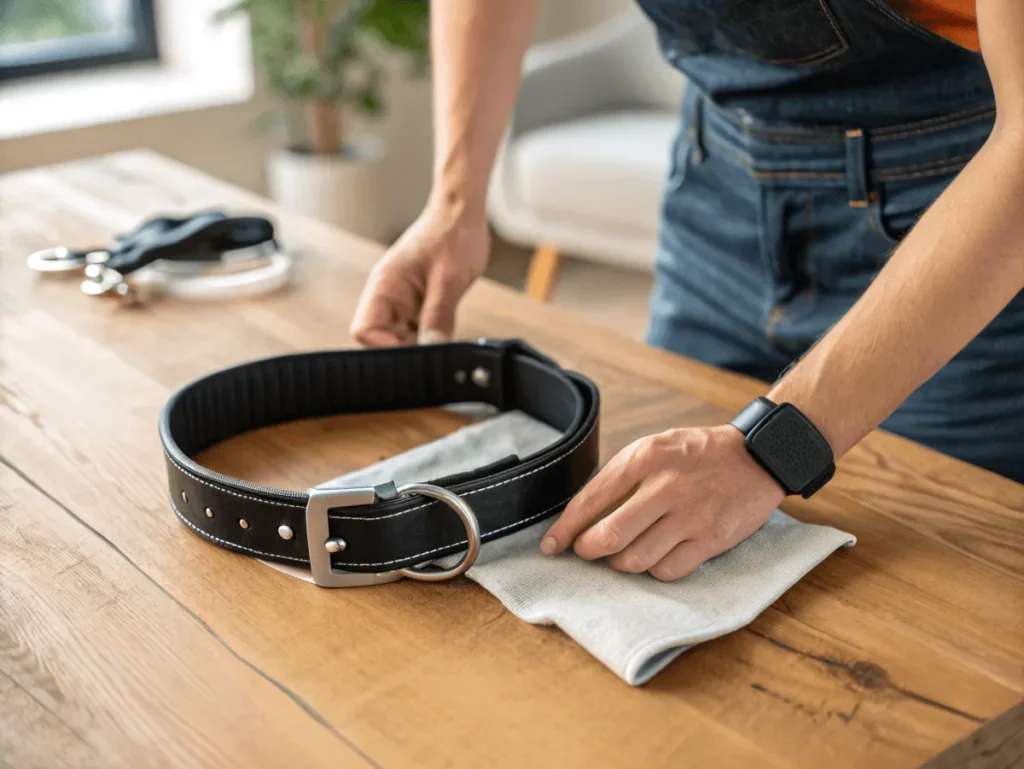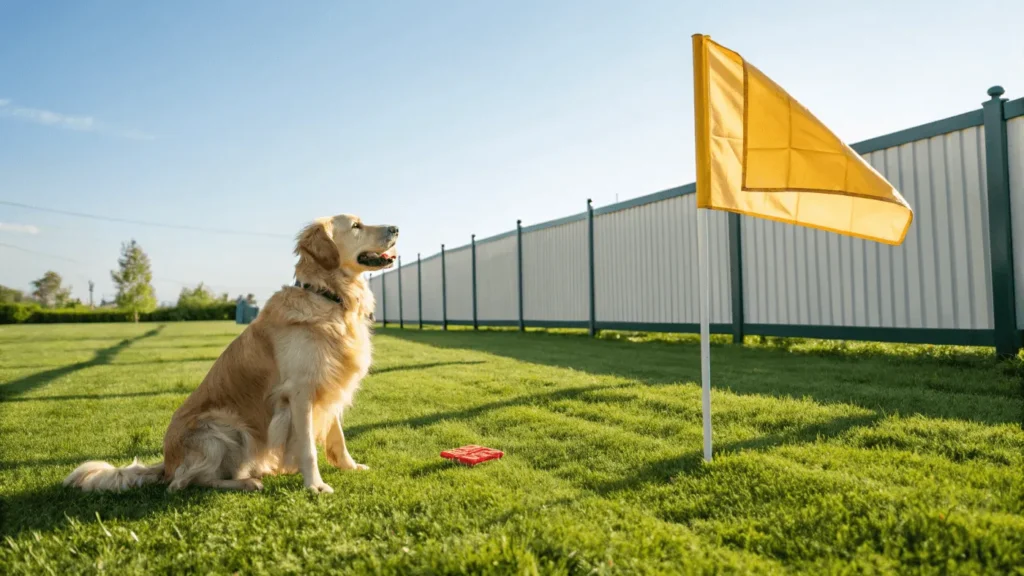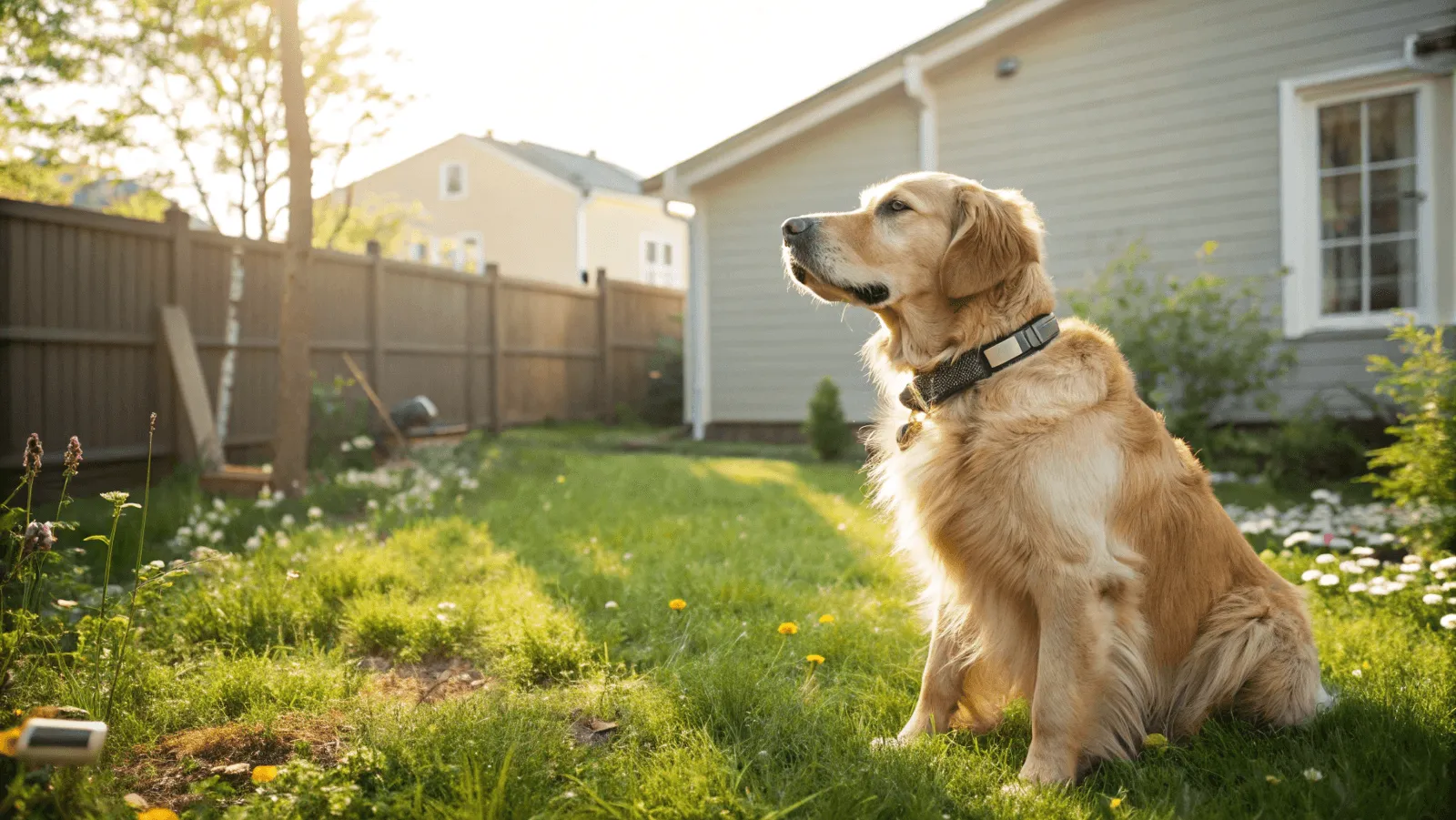If you’re looking for trusted invisible fence dog collar grooming tips to keep your pup both safe and well cared for, you’re in the right place. Invisible fence dog collar grooming isn’t just about looks—it’s essential for your dog’s skin health, comfort, and long-term happiness. This guide walks you through how to groom around the collar, maintain your dog’s comfort, and make the most of your invisible fence system—without stress or skin issues. For more background on how these systems work, the invisible fence training guide by AKC offers expert insights on safe usage.
But here’s the part many pet parents overlook: these collars need just as much grooming and care attention as your dog does.
In this friendly, fluff-free guide, we’ll cover everything you need to know—from how invisible fence collars work, to smart grooming tips, common mistakes, and expert FAQs that keep your pup comfortable and your peace of mind intact.
🐾 What Is an Invisible Fence Dog Collar?
Let’s start with the basics. An invisible fence dog collar is a special type of collar used in many invisible fence dog collar grooming routines to ensure both safety and skin comfort. It’s designed to work with an electronic containment system that sets a safe boundary for your dog—without the need for a traditional fence.
Here’s how it works:
- A transmitter emits a radio or GPS signal defining the boundary.
- Your dog wears a receiver collar that listens for this signal.
- When your dog gets too close to the edge, the collar gives a warning tone or gentle vibration.
- If they continue, the collar may emit a mild static correction to discourage them from going further.
It’s not painful or dangerous—it’s like a polite little reminder: “Hey buddy, not that way!”
🌱 Why Use an Invisible Fence?
Invisible fence collars are perfect for pet parents who want their dogs to enjoy outdoor freedom while staying safely within the yard.
Key Benefits:
- ✅ No digging or building required
- ✅ Customizable boundaries (great for odd-shaped yards)
- ✅ Works in front yards, backyards, or open areas
- ✅ Keeps your dog safe from cars, neighbors, or wandering off
They’re especially useful for active breeds that need space to run or for homes in areas where fencing isn’t allowed or practical. For high-energy dogs, consider checking out our dog supplement guide to support joint health, recovery, and overall vitality alongside their outdoor freedom.
🧠 Is It Safe and Humane?
Let’s bust a myth: Invisible fence systems are not cruel. With the right invisible fence dog collar grooming habits and training, they become one of the most humane options for free movement. Remember, consistent invisible fence dog collar grooming also prevents the irritation that sometimes gives these collars a bad rep. When used correctly, they’re an effective and humane training tool.
The static correction is designed to be startling, not painful—comparable to a quick tap on the shoulder.
Safe use depends on:
- Correct training (don’t skip this step!)
- Regular grooming and collar checks
- Using the lowest effective correction level
- Ensuring the collar fits properly and isn’t worn too long
In fact, most dogs learn the boundary within a week or two and rarely receive corrections after that.
✂️ Invisible Fence Dog Collar Grooming: Why the Neck Area Needs Extra Care
Here’s where most people go wrong: They focus on training but forget about comfort and skin health.
Just like you wouldn’t wear tight shoes all day without socks, dogs can experience discomfort, hair loss, or skin irritation from improperly maintained collars—especially electronic ones that make constant contact with the neck. PetMD’s advice on preventing collar-related skin irritation highlights the importance of regular inspection and cleaning. That’s why regular invisible fence dog collar grooming is a must for every pet parent.
from improperly maintained collars—especially electronic ones that make constant contact with the neck.
🛁 Invisible Fence Dog Collar Grooming Tips to Keep Your Dog Comfortable

Let’s walk through the non-negotiables to keep your pup safe, clean, and comfy.
1. Inspect the Neck Weekly
Lift the collar and check the contact area for:
- Redness or irritation
- Matted fur
- Sores or bumps
- Signs of moisture build-up
If you notice anything, remove the collar for a few days and allow the skin to breathe.
2. Keep the Area Dry
Damp fur = skin irritation. A dry neck area is essential to healthy invisible fence dog collar grooming. Never underestimate how powerful proper drying is—it’s a small act with a big effect on overall invisible fence dog collar grooming success, especially after swimming or rainy weather. If your dog swims, plays in the rain, or sweats (yes, dogs do sweat through their paws and skin!), dry the collar area thoroughly.
3. Brush the Fur Around the Collar
For long-haired dogs, matted fur around the collar is a hidden danger. Use a slicker brush to gently detangle fur under and around the collar at least twice a week. If you need help choosing safe tools for trimming or grooming, our dog clippers guide walks you through the best options for every breed and coat type.
4. Rotate Collar Position Daily
Each day, move the collar slightly to prevent constant pressure in one spot. This simple habit reduces friction and allows the skin to recover naturally.
5. Clean the Collar

Use a damp cloth to wipe the collar weekly. This step is often skipped in invisible fence dog collar grooming, but it’s crucial to prevent grime buildup that causes irritation. This removes dirt, skin oils, and bacteria that can accumulate over time. Avoid using harsh cleaners—just mild soap and water.
📏 Getting the Right Fit: Not Too Tight, Not Too Loose
Your dog’s invisible fence collar should sit high on their neck and snugly enough that it doesn’t move around—but not so tight it leaves a mark. A proper fit is a key part of invisible fence dog collar grooming because poor sizing leads to skin issues fast. and snugly enough that it doesn’t move around—but not so tight it leaves a mark.
The Two-Finger Rule:
You should be able to slide two fingers under the collar. If you can’t, it’s too tight. If it slips off easily, it’s too loose.
Pro tip: Re-check the fit after grooming! Trimming fur changes the collar’s snugness.
🛑 Common Mistakes That Can Hurt Your Dog
Even with the best intentions, pet owners often overlook these simple things that can lead to discomfort or poor training results:
| Mistake | Why It’s a Problem |
|---|---|
| ❌ Leaving collar on 24/7 | Can cause pressure sores or hair loss |
| ❌ Not grooming under the collar | Leads to matting and skin irritation |
| ❌ Using collar without training | Confuses and scares your dog |
| ❌ Never checking battery | A dead collar = zero protection |
| ❌ Ignoring signs of discomfort | Your dog can’t tell you, but their skin will |
🔋 Maintenance Checklist for Invisible Fence Collars
Keep this short routine in your notes or stick it on the fridge for weekly reminders:
✅ Check fit and adjust if needed
✅ Inspect neck for irritation
✅ Clean collar with damp cloth
✅ Charge or replace battery
✅ Rotate position on neck
✅ Brush under collar area — this is a non-negotiable in invisible fence dog collar grooming to prevent mats and airflow blockage
🛍️ Choosing the Right Collar (And When to Replace It)
Here’s what to look for when buying or upgrading:
- Waterproof design – Critical if your dog loves puddles or pools
- Adjustable correction levels – Allows for tailored training
- Lightweight material – Especially for smaller breeds
- Comfortable contact points – Rounded or silicone-coated
- Rechargeable battery – More convenient and eco-friendly
Consider top-rated options like:
- Halo Collar 3 – Smart GPS + health tracking
- PetSafe Stay & Play Wireless Fence – Trusted brand with flexible boundary setup
- SportDOG In-Ground Fence – Great for large or rural properties
Replace your collar every 1–2 years or sooner if it shows signs of damage or reduced performance.
🐕🦺 Training & Grooming: A Powerful Combo
The invisible fence isn’t just about boundaries—it’s about building trust. Incorporating invisible fence dog collar grooming into your routine strengthens that bond and ensures long-term comfort.

Pair collar use with:
- Positive training sessions (use treats, not fear!)
- Verbal praise and love
- Safe off-collar time each day
- Consistent grooming around the neck
That way, your dog associates the collar with freedom and fun, not punishment.
💬 Real Talk: What Other Dog Parents Ask
Q1: Can invisible fence collars cause burns?
Not if used correctly. Most issues come from prolonged pressure, poor hygiene, or tight fits—not the static signal itself.
Q2: Should I shave the neck for better contact?
No. Shaving can cause razor burn or irritation. Instead, trim long fur gently with scissors if necessary.
Q3: Can my dog wear the collar while sleeping?
Not recommended. Give them a break overnight—12 hours max wear time is ideal.
Q4: Is this safe for small dogs or puppies?
Yes, but choose a lightweight collar made specifically for smaller breeds. Start training no earlier than 5–6 months old.
🌟 Final Thoughts: A Safe Dog Is a Happy Dog
At the end of the day, using an invisible fence dog collar should never mean choosing between freedom and comfort.With the right training and consistent invisible fence dog collar grooming, your pup can enjoy outdoor playtime comfortably and confidently without worry—and you can relax knowing they’re protected.
So go ahead—let your dog explore the yard, sniff the wind, and soak up the sunshine… while you handle the smart stuff behind the scenes. 🐾💛

